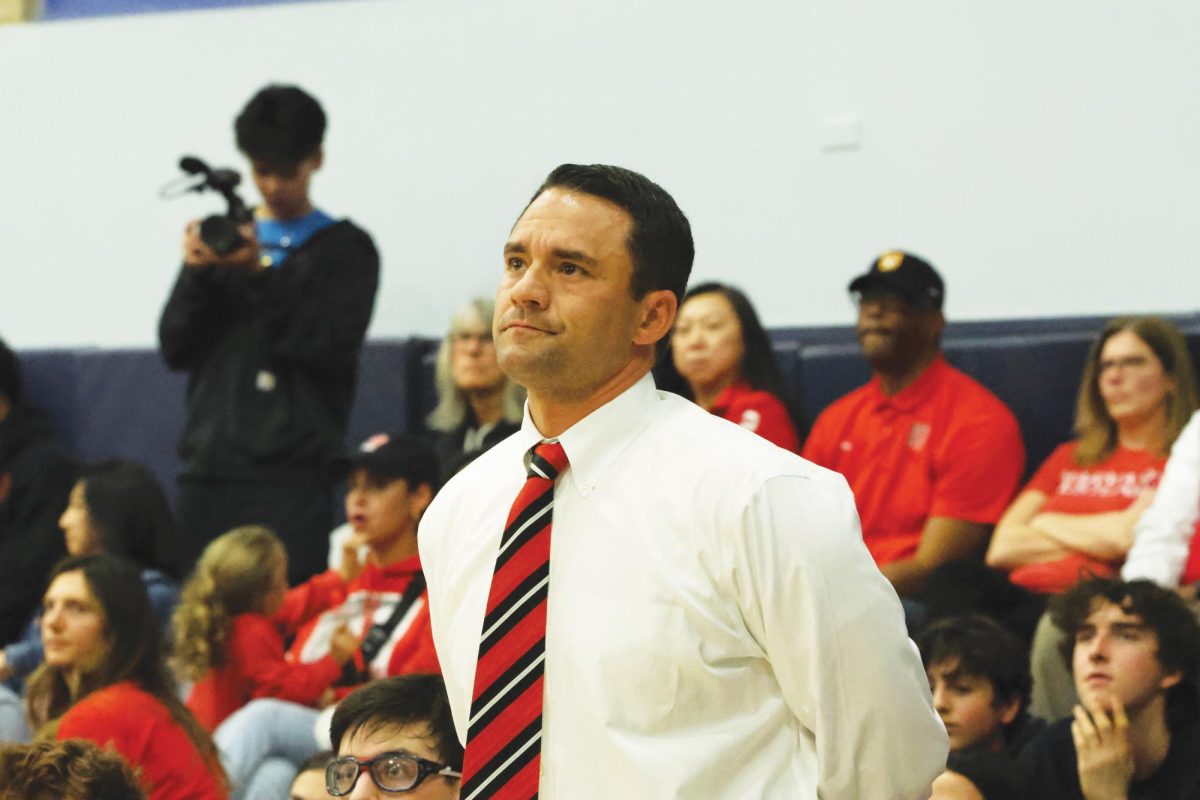By Abbie Neufeld
Almost every morning, while other students attempt to rise from their previous nightâs slumber to the sound of their teachersâ voices, the 55 students in the upper school Symphony Orchestra enjoy a different kind of wake-up call: the sound of music. Though these students rehearse almost every day, they only have two major concerts a year, the second of which takes place this Friday.
Â
The Principal Oboist, a.k.a.
“The Tuner”
When itâs time for first period, Lia Seraydarian â12 must make the trek down dozens of stairs to get to the bottom floor of Chalmers Hall. She then traverses the elongated hallway lined with posters advertising concerts, music camps and volunteer opportunities and finally enters Chalmers 104. However, she must be careful to conserve her energy for the long breaths she will need to hold later. She heads to the left and takes her place on the first step.
Seraydarian takes out her reed and soaks it in water for about a minute while she puts together the rest of her oboe. The reed must be moistened before playing in order for the oboe to play well. Though this is common knowledge for any oboist, Seraydarian attempts to go one step further than the average high school player. Like a professional oboist, Seraydarian has attempted to make her own reed. Though she has made several, she has yet to perfect one enough to suit her playing needs.
“Itâs really hard to make one that works well enough to actually use,” she said. “Maybe one day, but for now Iâll stick with buying one.”
After soaking the reed, Seraydarian puts it in her oboe, and plays a couple of notes to warm up.
Mark Hilt, the conductor, begins to talk, then ends his remarks with “An A please,” referring to the musical note. Seraydarian plays the requested note, holding it for about 12 seconds. The woodwinds tune their instruments to the A. She plays the same note for another 12 seconds. This time, the brass section tunes their instruments. She again plays the A: this time for the concertmaster.
Â
The Principal Violinist, a.k.a.
“The Concertmaster”
Sydney Cheong â14 takes the A, and plays it on her violin, tuning her strings to the note. It has been the practice in previous years for the oboist to continue to hold the A with the concertmaster. However, Cheong likes to tune the stringed instruments herself.
“It is easier for the winds and brass to tune to the oboe, and it is easier for the strings to tune to a stringed instrument,” said Cheong. “The tones just match better.” And Cheong knows what she is talking about. Cheong, who has been playing the violin since age 4, also held the position of concert master in the middle school Symphony Orchestra, leading the orchestra to win three awards at last yearâs Heritage Music Festival, not including her own win for a solo performance.
It is with a wide array of musical knowledge and decisions about details like the minutia of tuning that the concertmaster is able to really help lead the orchestra and give it a unique touch.
Though the title concertmaster might suggest an air of bravado, Cheong is hesitant to call herself a leader, and emphasizes the group aspect.
“Playing in an orchestra is very different than playing a solo piece,” she said. “You have to really listen to everyone else. Itâs about working as a group to create the best blend and musicality possible.”
Now that all instruments have been tuned, the orchestra can now begin to rehearse. One section, however, is noticeably absent from the tuning process: percussion.
Â
The Principal Percussionist, a.k.a. “The Lead Beat”
Most percussion instruments used in the orchestraâs pieces, with the notable exception of the timpani and piano, do not require tuning. Though the section doesnât participate in the morning tuning ritual, it still plays an integral role, helping define the orchestraâs rhythm.
Jay Kleinbart â12 is the principal percussionist. Though Kleinbartâs role as principal percussionist might appear less obvious than other sectionsâ principals, he still has a defined role. As section leader Kleinbart usually plays the most difficult parts, and he is often in charge of assigning the percussion parts to the section for each piece.
Unlike most other sections, percussion has flexibility with the instruments they play, depending on the piece of music. So far this year Kleinbart has played the timpani, temple blocks, bass drum and says by the end of the year he will probably end up playing everything, aside from the piano. Kleinbartâs proficiency in all of the percussion instruments allows him to help others with their techniques.
Â
The Show
Though these three musicians all have different roles in the orchestraâs organization, they all agree that they enjoy starting their day off with music. Seraydarian and Cheong both say that it is a nice way to ease into the school day, while Kleinbart says the attention required helps him stay alert throughout the day.
At this Fridayâs concert, the symphony orchestra will perform movements one and three from Sergei Prokofievâs Classical Symphony. The orchestra will then break up into chamber groups consisting of a brass ensemble, a string quartet, a brass quartet and a piano duet. The duet will be played on the same piano and is called “piano four hands”. This is the symphonyâs second winter concert.





































